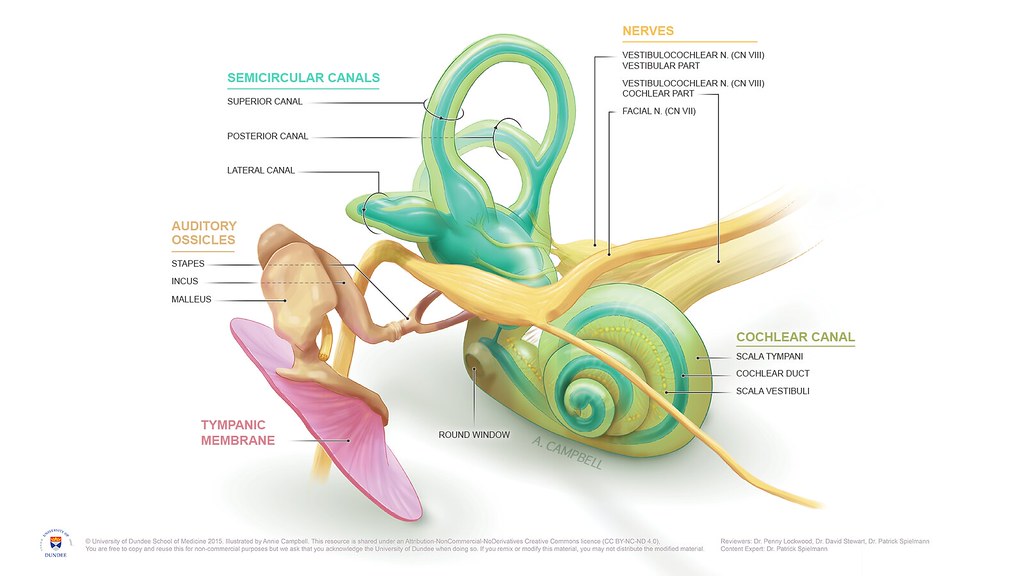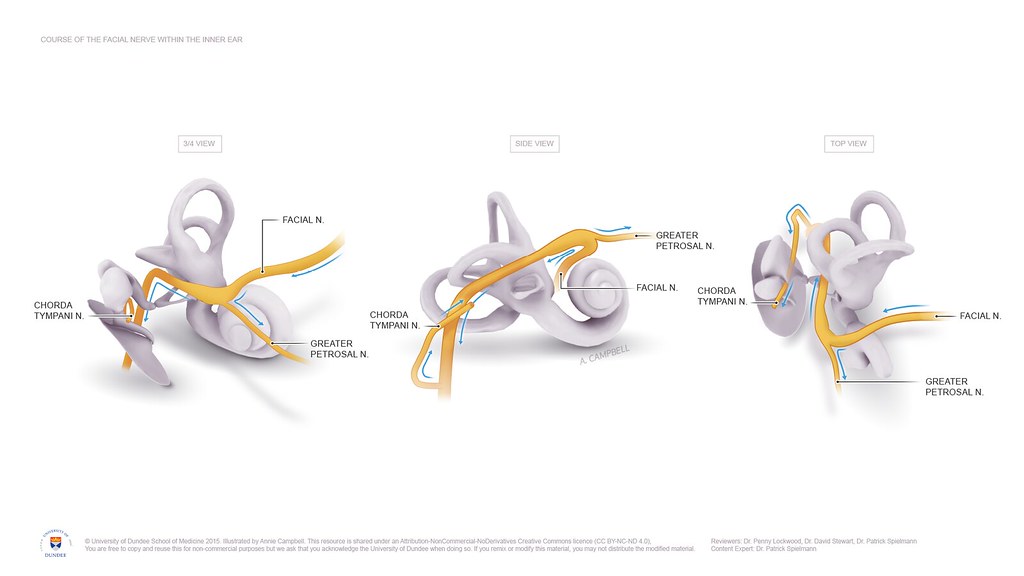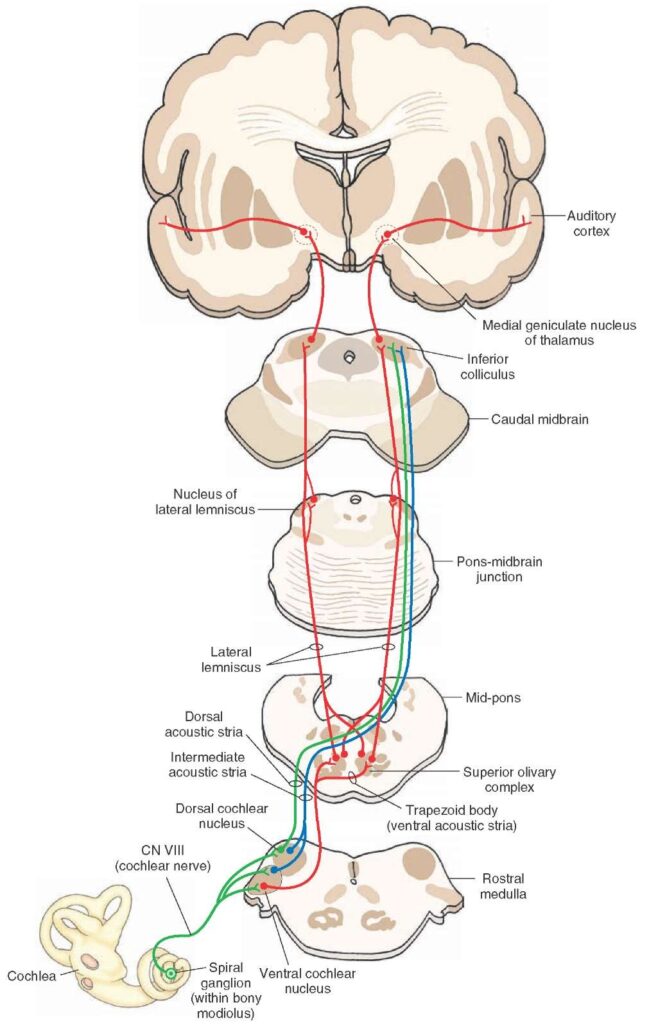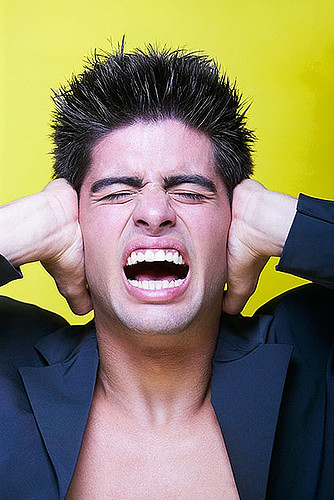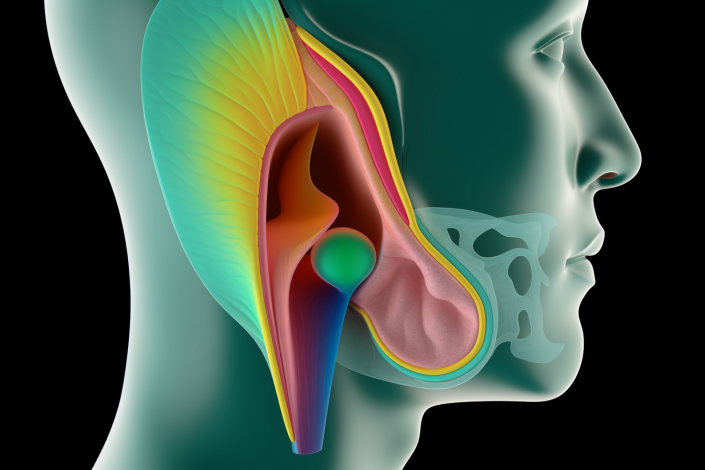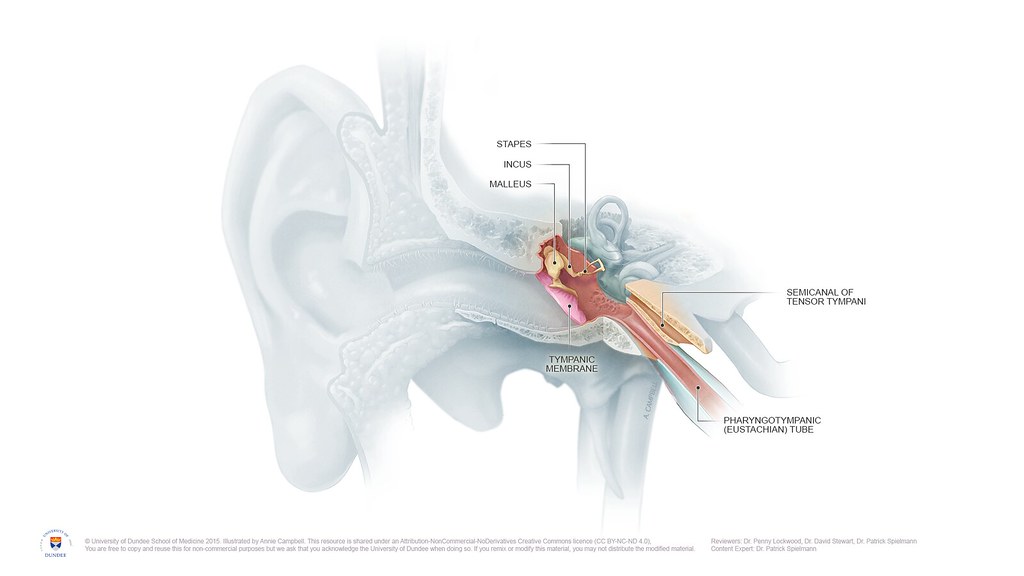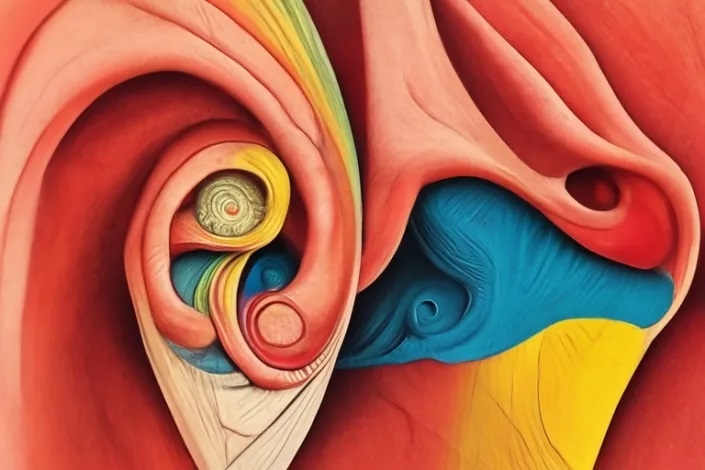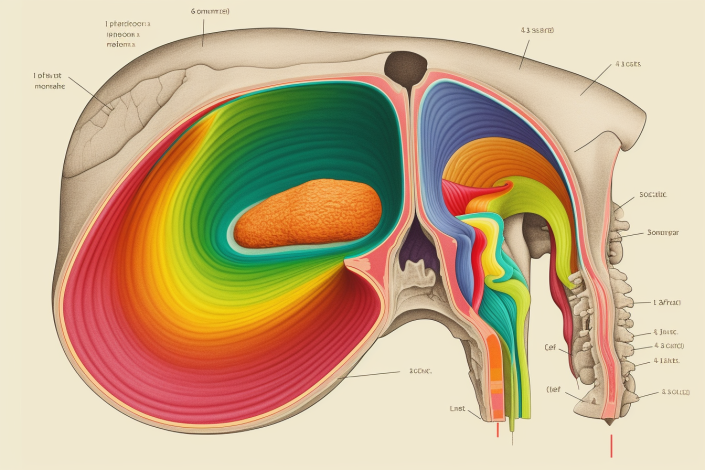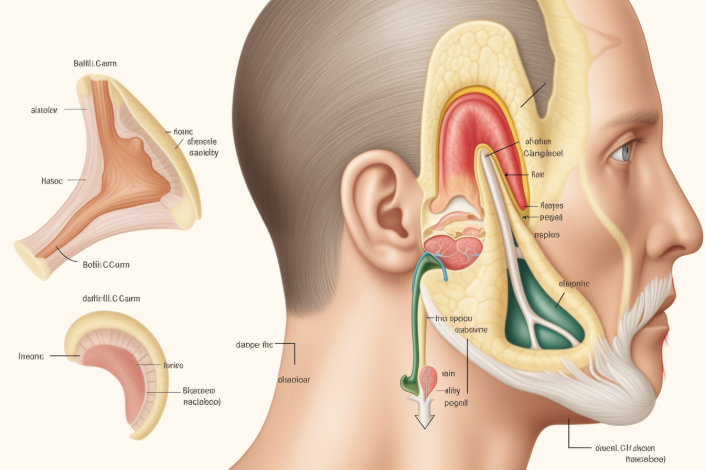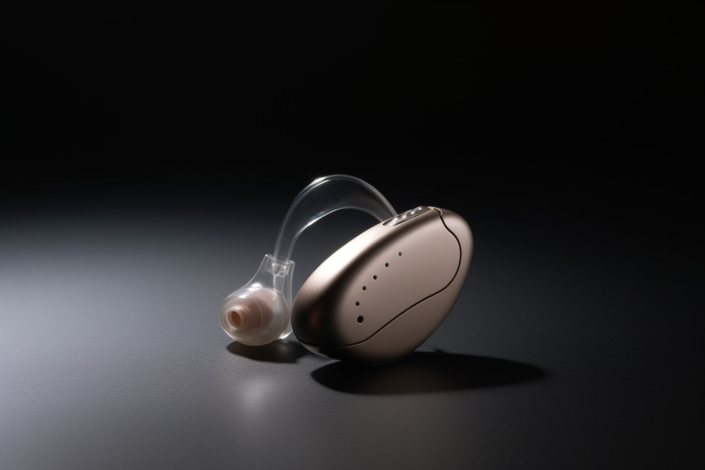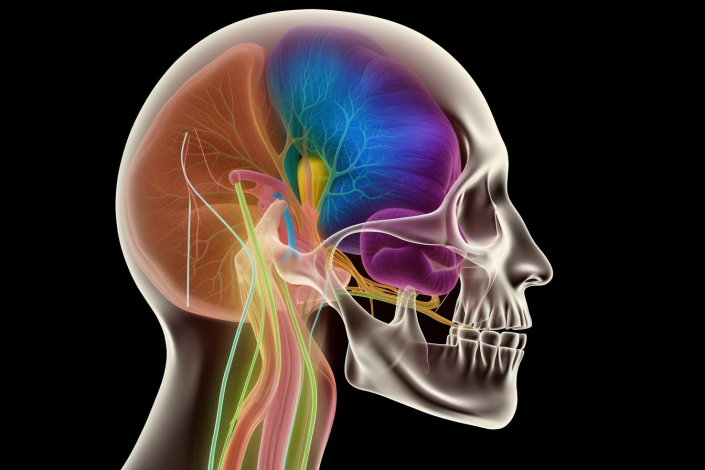You rely on your hearing to communicate, navigate and experience the world around you. But have you ever wondered how your ears actually work? The answer lies in the complex structure of the inner ear, a small but intricate system responsible for receiving sound waves and converting them into electrical signals that your brain can interpret. In this article, we’ll delve deeper into the core of hearing and explore all there is to know about the inner ear.
The anatomy of the inner ear may seem simple at first glance, but it’s actually much more complex than meets the eye. From tiny hair cells to delicate fluid-filled structures, each component plays a vital role in processing sound and maintaining balance. Understanding how these parts work together is essential to understanding how we hear and move through space. In this article, we’ll take a detailed look at not only the anatomy of the inner ear but also its function and common conditions that can affect it. By delving deeper into this fascinating topic, you’ll gain a greater appreciation for just how important your inner ear truly is.
Introduction to the Inner Ear
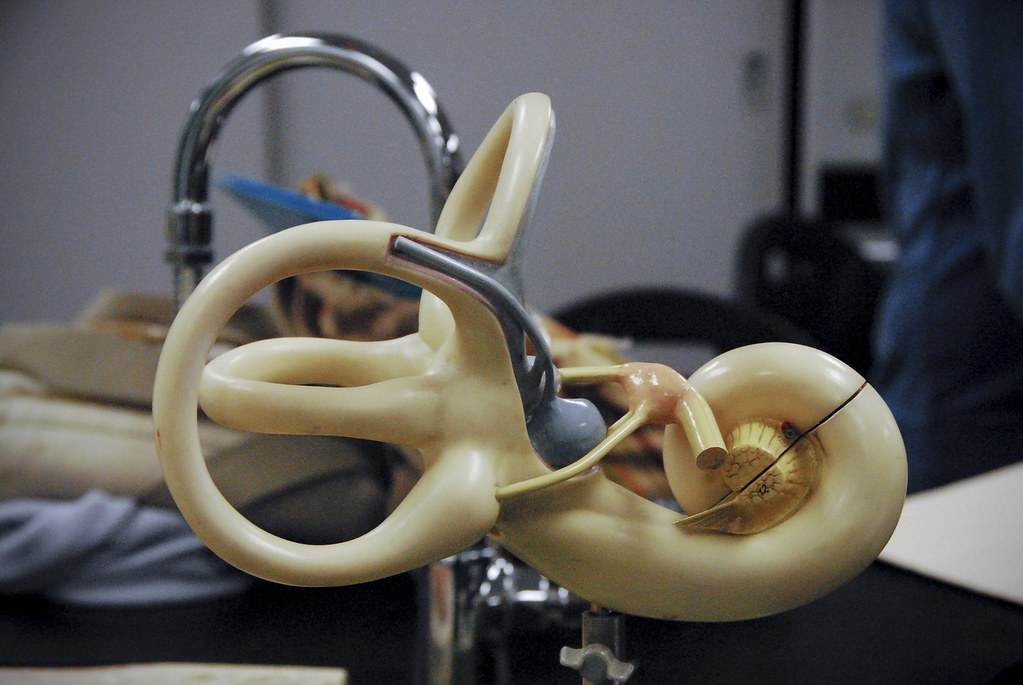
Let’s kick off by exploring the intricate system responsible for our ability to perceive sound. The inner ear is a complex structure that plays a crucial role in hearing. It consists of various components, including the cochlea, vestibule, and semicircular canals. Each of these parts has distinct functions and processes that work together seamlessly to help us hear.
The development and evolution of the inner ear have been studied extensively by scientists over the years. They have discovered that this sensory organ evolved from fish-like ancestors, gradually adapting to changes in its environment and developing more advanced structures. For instance, while some species have vestigial or absent semicircular canals, others have highly specialized ones that allow them to detect even subtle movements.
Understanding the functions and processes of the inner ear is essential for appreciating how we interpret sound waves. With each component playing a specific role in hearing, any damage or disruption in their functioning can lead to hearing loss or balance problems. In the subsequent section on anatomy of the inner ear, we will delve deeper into these structures to understand how they contribute towards our auditory perception.
Anatomy of the Inner Ear

Now that you’ve learned the basics of the inner ear, let’s delve deeper into its anatomy. The cochlea is a spiral-shaped structure responsible for converting sound waves into electrical signals. The vestibule and semicircular canals help with balance and spatial orientation. Within the cochlea are tiny hair cells that respond to specific frequencies, and the basilar membrane separates these frequencies to create a clear representation of sound.
Cochlea, Vestibule, and Semicircular Canals
You’ll love learning about the cochlea, vestibule, and semicircular canals – they play a crucial role in how you experience sound and balance. The cochlea is a spiral-shaped structure that contains tiny hair cells responsible for transmitting sound signals to your brain. It is divided into three compartments: the scala vestibuli, scala media, and scala tympani. Sound waves enter the cochlea through the oval window and cause vibrations in the fluid within these compartments. This movement stimulates the hair cells which then send signals to your brain via nerve fibers.
The vestibule and semicircular canals are involved in maintaining your sense of balance. They are located adjacent to each other within the inner ear and contain structures called otoliths (tiny crystals) and cupulae (gelatinous membranes). When you move your head or change direction, these structures shift position which sends signals to your brain about changes in acceleration or gravity. Together with information from your eyes, muscles, and joints, this helps maintain stability during movement. Understanding how these structures work is important for diagnosing balance disorders such as vertigo or dizziness caused by problems with the inner ear. Moving on to the next subtopic, let’s take a closer look at hair cells and their relationship with the basilar membrane.
Hair Cells and the Basilar Membrane
The relationship between hair cells and the basilar membrane can be compared to a guitar string vibrating in response to different frequencies, allowing us to distinguish between different pitches. Hair cells are sensory receptors responsible for converting sound vibrations into electrical signals that can be interpreted by the brain as sound. The basilar membrane is a thin strip of tissue that runs along the length of the cochlea and plays a critical role in processing these signals.
To understand how hair cells and the basilar membrane work together, it’s helpful to consider their mechanics. As shown in the table below, different frequencies of sound cause different parts of the basilar membrane to vibrate. This vibration causes nearby hair cells to bend, which triggers an electrical signal that travels through nerve fibers towards the brain. By analyzing these signals from thousands of hair cells across the cochlea, our brains are able to distinguish between sounds with varying pitch and intensity.
| Sound Frequency (Hz) | Location on Basilar Membrane |
|---|---|
| 20 | Apex |
| 100 | Middle |
| 500 | Base |
| 1,000 | Base |
| 10,000 | Base/Apex |
Research has shown that damage or loss of hair cells can lead to hearing loss or deafness. While mammals have limited ability for hair cell regeneration, there is ongoing research exploring ways to stimulate regrowth or replacement of damaged hair cells in humans. Understanding how the mechanics of the basilar membrane work with hair cell function is crucial for developing effective treatments for hearing impairments.
Moving forward from this understanding about how Hair Cells and Basilar Membrane works will help us understand ‘how inner ear works’ by combining information about other components such as auditory nerve fibers and brain processing areas involved in interpreting sounds.
How the Inner Ear Works
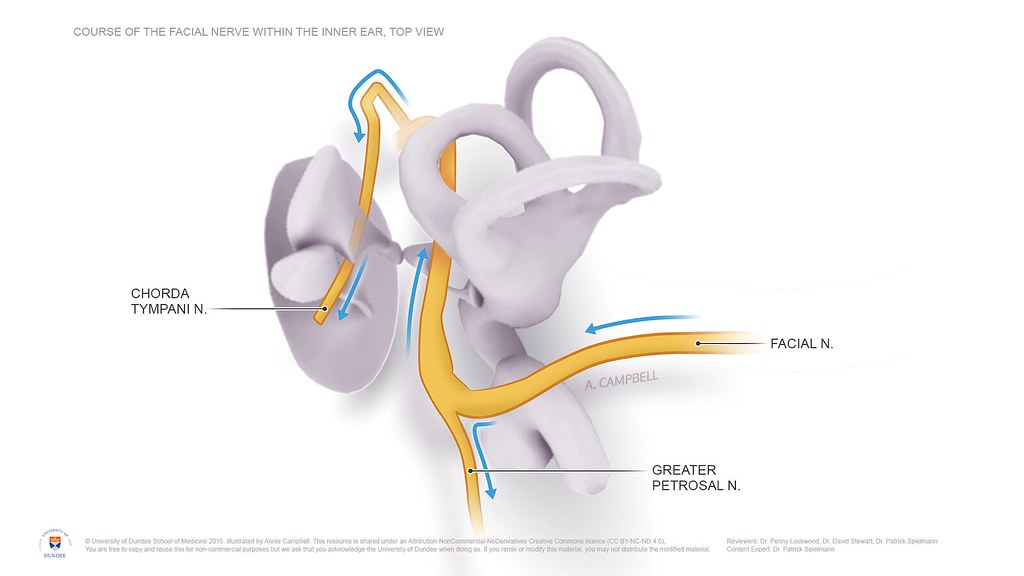
Understanding how sound is processed in this intricate system can leave us in awe of the complexity and wonder of the human body. The inner ear mechanics are responsible for auditory processing – translating sound waves into electrical signals that our brain can interpret as meaningful sounds. It all starts with the outer ear, which captures sound waves and directs them towards the middle ear.
The middle ear contains three tiny bones that amplify and transmit sound vibrations to the oval window, a membrane covering the entrance to the inner ear. Once there, these vibrations cause fluid inside the cochlea (a snail-shaped structure) to move, stimulating hair cells on the basilar membrane. These hair cells act like tiny microphones, converting mechanical energy into electrical signals that travel along nerve fibers to be interpreted by our brain as sound.
In addition to its role in hearing, the inner ear also plays an important role in maintaining balance and spatial orientation. This is achieved through vestibular function – a complex system involving fluid-filled tubes connected to sensory receptors that detect changes in head position and movement. Understanding how both hearing and balance are intricately linked within this small but mighty organ is truly remarkable.
Vestibular Function
When it comes to your sense of balance and spatial orientation, the vestibular system in your inner ear plays a crucial role. It helps you maintain stability, adjust to changes in position and movement, and navigate through space. However, disorders affecting the inner ear can disrupt these functions, leading to dizziness, vertigo, and other symptoms that can greatly impact your daily life.
Balance and Spatial Orientation
Navigating through life requires a steady sense of balance and spatial awareness, much like a ship needs a sturdy compass to navigate the rough seas. The inner ear plays a crucial role in maintaining our balance and spatial orientation. When the vestibular system is not functioning properly due to inner ear disorders or other causes, individuals may experience dizziness, vertigo, and spatial disorientation.
Fortunately, there are many ways to improve your balance and reduce your risk of falls. Balance exercises such as standing on one leg, heel-to-toe walking, and Tai Chi have been shown to be effective in improving balance and reducing falls in older adults. Additionally, it’s important to keep your eyes focused on where you’re going while walking or standing still. This helps your brain process visual information that can aid in maintaining balance. With proper care and attention to your inner ear health, you can maintain good balance and avoid the negative consequences of spatial disorientation.
Inner Ear Disorders
You may be surprised to learn about the disorders that can disrupt your balance and cause discomfort in your daily life. These disorders are often linked to issues within the inner ear, which plays a crucial role in maintaining equilibrium and spatial orientation. Here are some common conditions that affect the inner ear:
- Vestibular migraine – This type of migraine causes dizziness and vertigo, along with other symptoms such as sensitivity to light and sound.
- Benign Paroxysmal Positional Vertigo (BPPV) – This condition occurs when small crystals in the inner ear become dislodged and move into one of the semicircular canals, causing brief episodes of intense vertigo.
- Meniere’s disease – A chronic condition that affects both hearing and balance, causing recurrent episodes of vertigo, tinnitus, and hearing loss.
- Labyrinthitis- An inflammation or infection of the labyrinth in the inner ear, resulting in severe vertigo, nausea, vomiting, and difficulty with coordination.
If you experience any of these symptoms regularly or have been diagnosed with one of these conditions, it is important to seek medical attention promptly. Understanding how these disorders affect your body can help you manage them more effectively. Now let’s take a closer look at some common conditions affecting the inner ear.
Common Conditions Affecting the Inner Ear

You may experience hearing loss, tinnitus, or Meniere’s disease due to common conditions affecting your inner ear. Hearing loss can occur suddenly or gradually and may be caused by aging, exposure to loud noises, or certain medications. Tinnitus is a ringing or buzzing sound in the ears that can be continuous or intermittent and can also be caused by exposure to loud noises or as a side effect of medication. Meniere’s disease is characterized by vertigo, ringing in the ears, and hearing loss and may be caused by fluid buildup in the inner ear. Understanding these conditions can help you take proactive steps to protect your hearing health.
Hearing Loss
If you’re struggling to hear conversations or sounds that used to come easily, there’s a chance you may be experiencing hearing loss. Hearing loss is a common condition affecting the inner ear, and it can be caused by a variety of factors. Some causes of hearing loss include aging, exposure to loud noises, genetics, infections, and certain medications.
Prevention is key when it comes to hearing loss. Protecting your ears from excessive noise exposure and maintaining good ear hygiene are important steps in preventing hearing damage. Regular check-ups with an audiologist can also help detect any early signs of hearing loss. If you do experience hearing loss, there are treatment options available such as hearing aids or cochlear implants. Management techniques like lip reading or using assistive listening devices can also improve communication abilities for those with hearing loss. Now let’s move on to another common condition affecting the inner ear: tinnitus.
Tinnitus
As you read about tinnitus, you may coincidentally notice a ringing or buzzing in your ears that can be caused by a variety of factors such as exposure to loud noises, ear infections, or even stress. Tinnitus is the perception of sound when there is no external source present. It can manifest as ringing, buzzing, hissing, or other sounds that may be constant or intermittent. The causes of tinnitus are not fully understood but it is believed to be related to damage in the inner ear.
Management of tinnitus includes identifying and treating any underlying conditions that could be contributing to the problem. This could involve using hearing aids to help improve hearing loss which has been connected to tinnitus. Additionally, cognitive-behavioral therapy and sound therapy have also been shown to help manage symptoms. With proper management techniques and support from healthcare professionals, those with tinnitus can learn how to cope with their condition and lessen its impact on their daily lives. As we move forward into discussing Meniere’s disease, it’s important to note that this condition also affects the inner ear but presents with different symptoms than those seen in tinnitus.
Meniere’s Disease
Let’s explore Meniere’s disease and its unique symptoms that can greatly impact a person’s daily life. This inner ear disorder is characterized by sudden attacks of vertigo, hearing loss, tinnitus, and a feeling of fullness or pressure in the affected ear. These symptoms can last for several hours and may recur frequently, leading to anxiety, depression, and difficulty in social interactions.
Causes of Meniere’s disease are not fully understood but may involve a combination of genetic predisposition, viral infections, autoimmune disorders, or abnormal fluid buildup in the inner ear. Diagnosis is based on clinical history, physical examination, hearing tests, and imaging studies such as magnetic resonance imaging (MRI). Management and treatment of Meniere’s disease may include medication such as diuretics or steroids to reduce fluid buildup or inflammation; lifestyle modifications like avoiding caffeine or alcohol that can trigger attacks; vestibular rehabilitation therapy to improve balance; or surgery in severe cases.
As you delve deeper into the treatment options for inner ear disorders like Meniere’s disease, you will find that early detection and intervention are crucial for better outcomes. Different approaches may work for different people depending on the severity and duration of their symptoms. It is important to consult with your healthcare provider about any concerns regarding your hearing health so that you can enjoy a better quality of life without being limited by inner ear conditions.
Treatment Options for Inner Ear Disorders

You can explore various options for treating disorders affecting the auditory system. For mild to moderate hearing loss, hearing aids are often recommended. They amplify sounds and improve speech clarity. On the other hand, cochlear implants are helpful for those with severe to profound hearing loss who cannot benefit from hearing aids. These devices bypass damaged hair cells in the inner ear and directly stimulate the auditory nerve.
For some inner ear disorders, medications may be prescribed by a doctor. These drugs may help reduce symptoms such as vertigo or tinnitus. However, not all conditions can be effectively treated with medication alone. In some cases, surgery is necessary to restore or improve hearing function. Auditory brainstem implants (ABIs) are another option for patients with certain types of deafness that cannot be treated with traditional cochlear implants.
While there are several treatment options available for inner ear disorders, it is important to remember that prevention and maintenance of inner ear health should also be prioritized. Regular check-ups with an audiologist and taking steps to protect your ears from loud noises can go a long way in preserving your hearing abilities over time.
Prevention and Maintenance for Inner Ear Health
To keep your ears in tip-top shape, don’t neglect the simple yet powerful steps you can take to protect them from harm. One of the best ways to maintain inner ear health is by adopting healthy habits and making smart dietary choices. Eating a balanced diet rich in vitamins A, C, and E, as well as magnesium and zinc, can significantly reduce your risk of hearing loss. Additionally, avoiding smoking and excessive alcohol consumption can also help prevent damage to your inner ear.
Another crucial factor in maintaining inner ear health is reducing exposure to environmental factors that can cause damage over time. Noise exposure is one of the most significant risks to our hearing health today. Loud music concerts or prolonged use of headphones at high volumes can lead to permanent hearing loss. To minimize this risk, it’s essential to limit your exposure to loud noises whenever possible by wearing protective gear such as earmuffs or earplugs.
In conclusion, taking care of your inner ear is vital for optimal hearing throughout life. By incorporating healthy habits into your lifestyle and minimizing exposure to environmental factors that pose a risk to your ears’ health, you can prevent many common causes of hearing loss. In the next section about research and advancements in inner ear technology, we’ll explore some exciting developments that may revolutionize how we approach treating inner ear disorders in the future.
Research and Advancements in Inner Ear Technology
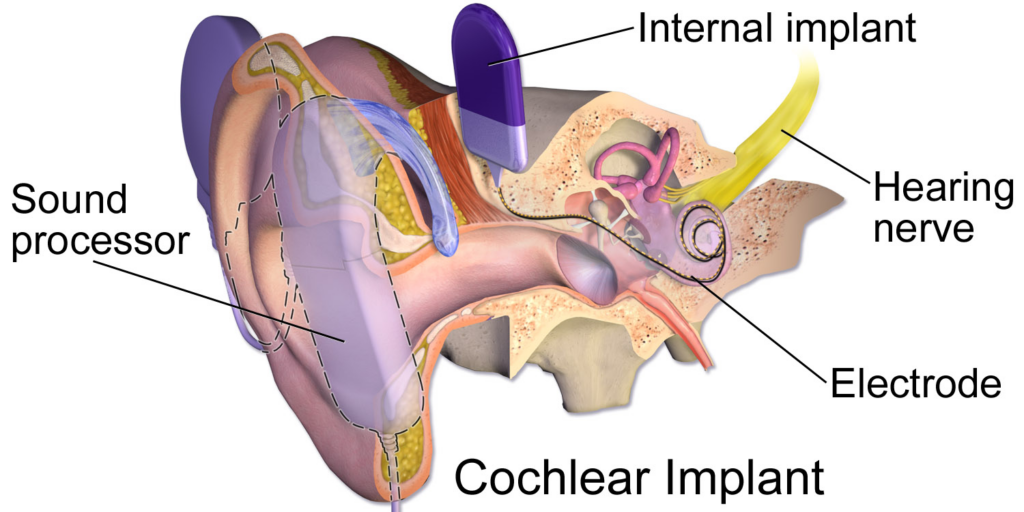
You’ll be interested to know that there have been significant advancements in inner ear technology. Innovative treatments are now available for those with hearing loss, and future developments promise even more exciting possibilities. With these new technologies, individuals can improve their quality of life by enhancing their ability to hear and communicate effectively.
Innovative Treatments
Innovative treatments are revolutionizing the way we approach hearing loss, offering hope and relief to those who have struggled for too long. Regenerative medicine is one such treatment that involves using stem cells to repair damaged tissues in the inner ear. Stem cells can differentiate into various cell types, making them a promising solution for restoring lost hair cells – which are crucial for hearing. Researchers have already successfully regenerated hair cells in animal models, and clinical trials are underway to test this approach in humans.
Another promising treatment option is gene therapy, which is based on introducing healthy genes into affected individuals to compensate for defective ones. This technique could potentially treat genetic disorders that cause deafness by replacing faulty genes with functional ones. Although still in its early stages of development, gene therapy has shown promising results in preclinical studies and holds great promise for treating inherited forms of hearing loss. With these innovative treatments on the horizon, there’s an increasing sense of optimism in the field of hearing research as we continue to push the boundaries of what’s possible.
Moving forward, future developments will undoubtedly build upon these successes and open up new avenues for tackling hearing loss head-on.
Future Developments
As we look ahead, exciting breakthroughs are on the horizon that will take our understanding of hearing to new heights. Future developments in the field of audiology promise to revolutionize how we diagnose and treat hearing loss. Technological advancements such as gene therapies, stem cell treatments, and cochlear implants with improved functionality will provide more personalized solutions for patients.
One area where significant progress is being made is in regenerative medicine. Researchers are exploring ways to regenerate hair cells within the inner ear, which play a crucial role in detecting sound waves. Another promising development is the use of optogenetics to stimulate nerves within the ear using light instead of electrical impulses. These cutting-edge approaches hold immense potential for restoring hearing function and improving quality of life for those with auditory impairments.
In conclusion, appreciating the complexity and importance of the inner ear requires us to continually push boundaries through research and innovation. By harnessing technological advancements and pursuing novel treatments, we can unlock new possibilities for treating hearing loss and enhancing overall auditory health. It’s an exciting time for audiology, as we strive towards a future where everyone has access to effective solutions for their hearing needs.
Conclusion: Appreciating the Complexity and Importance of the Inner Ear

By understanding the intricacies of this little-known part of our body, you can gain a deeper appreciation for the amazing capabilities of the human sensory system. The inner ear plays a crucial role in hearing and balance, two vital functions that allow us to navigate the world around us. Without it, we would be unable to enjoy music or even stand upright without falling over.
Maintaining the health of your inner ear is essential for preserving your hearing abilities and overall quality of life. Inner ear rehabilitation techniques such as vestibular therapy can help individuals who suffer from conditions like vertigo or dizziness regain their sense of balance and improve their daily functioning. Similarly, regular check-ups with an audiologist can help catch any potential issues early on before they develop into more severe problems.
In conclusion, appreciating the complexity and importance of the inner ear is crucial for maintaining good auditory and vestibular health. Our ears are remarkable organs that enable us to perceive sound waves and maintain our equilibrium in space. By taking care of our inner ears through proper hygiene practices, regular check-ups with healthcare professionals, and utilizing rehabilitation techniques when necessary, we can ensure that we continue to live life to its fullest potential.
Frequently Asked Questions
Can hearing loss be completely cured through treatment options for inner ear disorders?
If you’re wondering whether hearing loss can be completely cured through treatment options for inner ear disorders, the answer is yes and no. While there’s currently no cure for most types of hearing loss, some treatments like stem cell therapy show promising results in restoring damaged cells in the inner ear. Cochlear implants are also an effective option for severe hearing loss by bypassing the damaged parts of the inner ear and directly stimulating the auditory nerve. However, it’s important to note that these treatments may not work for everyone and early intervention is key in preventing further damage to your hearing.
Does the anatomy of the inner ear differ between different species?
Comparative anatomy is a fascinating field that reveals how evolutionary adaptations have shaped the inner ear across different species. From the delicate structures of mammals to the robust systems of reptiles, each creature’s anatomy has been tailored for their unique auditory needs. The intricate mechanisms of sound detection and transmission are constantly evolving, and studying these differences can reveal valuable insights into hearing disorders and potential treatments. By examining the minute details of inner ear structures, scientists can uncover clues about how hearing evolved and how it may continue to adapt in the future.
How do certain medications or drugs affect the inner ear?
If you take certain medications or drugs, you may be at risk for drug induced ear damage. This can affect the inner ear and cause balance disorders. It’s important to talk to your doctor about any potential side effects before taking a new medication or drug. Some common culprits include antibiotics, chemotherapy drugs, and nonsteroidal anti-inflammatory drugs (NSAIDs). Symptoms of inner ear damage can include dizziness, vertigo, tinnitus (ringing in the ears), and hearing loss. If you experience any of these symptoms while on medication, it’s important to seek medical attention immediately.
Are there any alternative therapies or natural remedies that can improve inner ear health?
If you’re looking for natural ways to improve your hearing function, there are several alternative remedies worth exploring. Herbal supplements have been used for centuries to promote inner ear health, and certain types of acupuncture may also be beneficial. Additionally, inner ear exercises can help strengthen the muscles responsible for transmitting sound waves to the brain. While these methods may not completely replace traditional medical treatments, incorporating them into your overall wellness routine could provide additional benefits and potentially enhance your overall hearing experience.
How does age affect the function and health of the inner ear?
As you age, hearing deterioration becomes more likely due to cochlear damage. The tiny hair-like structures in the inner ear that convert sound waves into electrical signals can become damaged over time, leading to a loss of hearing sensitivity. This is often accompanied by difficulty understanding speech and distinguishing certain sounds. Additionally, exposure to loud noises or certain medications can also contribute to inner ear damage and hearing loss. It’s important to take steps to protect your hearing, such as wearing earplugs in noisy environments and limiting exposure to loud sounds whenever possible. If you are experiencing signs of hearing loss, it’s important to see a healthcare professional for evaluation and potential treatment options.
Conclusion
Now that you’ve learned about the intricate workings of the inner ear, it’s time to appreciate its complexity and importance. Without this tiny but mighty organ, we wouldn’t be able to hear or maintain our balance. It’s amazing how something so small can have such a big impact on our daily lives.
As you continue to take care of your inner ear health, remember the saying “an ounce of prevention is worth a pound of cure.” By taking simple steps like wearing ear protection in noisy environments and treating illnesses promptly, you can avoid potentially debilitating inner ear disorders. And with advancements in technology and ongoing research, there is hope for even better treatments and therapies in the future.
So next time you hear someone say “the devil is in the details,” remember that it’s those very details that make hearing and balancing possible. Take care of your inner ear, and it will take care of you.
